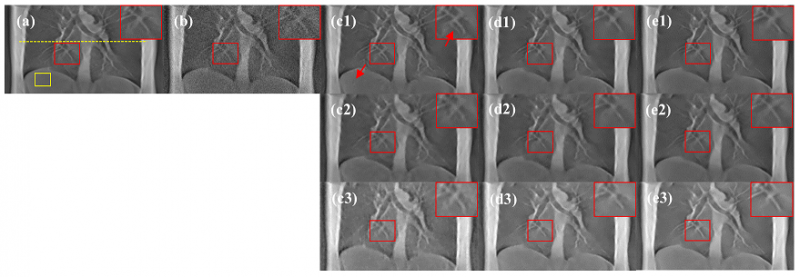글로벌 연구동향
의학물리학
- [Phys Med Biol .] A denoising model based on multi-agent reinforcement learning with data transformation for digital tomosynthesis
건양대 / 남기복, 이승완*
- 출처
- Phys Med Biol .
- 등재일
- 2023 Jun 12
- 저널이슈번호
- 68(12). doi: 10.1088/1361-6560/acd615.
- 내용
Abstract
Objective. Denoising models based on the supervised learning have been proposed for medical imaging. However, its clinical availability in digital tomosynthesis (DT) imaging is limited due to the necessity of a large amount of training data for providing acceptable image quality and the difficulty in minimizing a loss. Reinforcement learning (RL) can provide the optimal pollicy, which maximizes a reward, with a small amount of training data for implementing a task. In this study, we presented a denoising model based on the multi-agent RL for DT imaging in order to improve the performance of the machine learning-based denoising model.Approach. The proposed multi-agent RL network consisted of shared sub-network, value sub-network with a reward map convolution (RMC) technique and policy sub-network with a convolutional gated recurrent unit (convGRU). Each sub-network was designed for implementing feature extraction, reward calculation and action execution, respectively. The agents of the proposed network were assigned to each image pixel. The wavelet and Anscombe transformations were applied to DT images for delivering precise noise features during network training. The network training was implemented with the DT images obtained from the three-dimensional digital chest phantoms, which were constructed by using clinical CT images. The performance of the proposed denoising model was evaluated in terms of signal-to-noise ratio (SNR), structural similarity (SSIM) and peak signal-to-noise ratio (PSNR).Main results. Comparing the supervised learning, the proposed denoising model improved the SNRs of the output DT images by 20.64% while maintaining the similar SSIMs and PSNRs. In addition, the SNRs of the output DT images with the wavelet and Anscombe transformations were 25.88 and 42.95% higher than that for the supervised learning, respectively.Significance. The denoising model based on the multi-agent RL can provide high-quality DT images, and the proposed method enables the performance improvement of machine learning-based denoising models.
(a) GT 영상, (b) 입력 영상, (c1-c3) 강화학습모델 출력 영상, (d1-d3) convGRU를 접목한 강화학습 출력 영상, (e1-e3) convGRU 및 RMC를 접목한 강화학습 출력 영상, (c1-e1) 도메인 변환 기술을 적용하지 않은 출력 영상, (c2-e2) wavelet 변환 기술 적용한 출력 영상, (c3-e3) Anscombe 변환 기술 적용한 출력 영상
Affiliations
Kibok Nam 1, Dahye Lee 1, Seungwan Lee 1 2
1Department of Medical Science, Konyang University, Daejoen, Republic of Korea.
2Department of Radiological Science, Konyang University, Daejoen, Republic of Korea.
- 키워드
- data transformation; denoising; digital tomosynthesis; multi-agent reinforcement learning.
- 연구소개
- 본 논문에서는 디지털 토모신세시스 영상의 화질 개선을 위해 다수 에어전트 강화학습 기반 잡음 감소 모델을 개발하였습니다. 모델 성능의 향상을 위해 도메인 변환 영상을 이용하여 학습을 진행하였으며, convGRU 및 RMC를 네트워크 구조에 접목하였습니다. 또한 모델 성능 검증을 위해 지도학습기술과 비교를 진행하였습니다. 그 결과 지도학습기술에 비해 본 논문에 개발한 모델을 적용한 영상의 잡음 특성 및 정량적 정확도가 향상되는 결과를 확인하였습니다. 본 논문은 의료영상 화질 향상을 위해 새로운 딥러닝 기술을 개발하고자 하는 연구자들에게 도움이 될 것이라고 생각됩니다.
- 덧글달기
- 이전글 [Phys Med Biol .] Strategy to implement a convolutional neural network based ideal model observer via transfer learning for multi-slice simulated breast CT images
- 다음글 [J Appl Clin Med Phys .] Error on the stopping power ratio of ERKODENT's mouthpiece for head and neck carbon ion radiotherapy treatment









